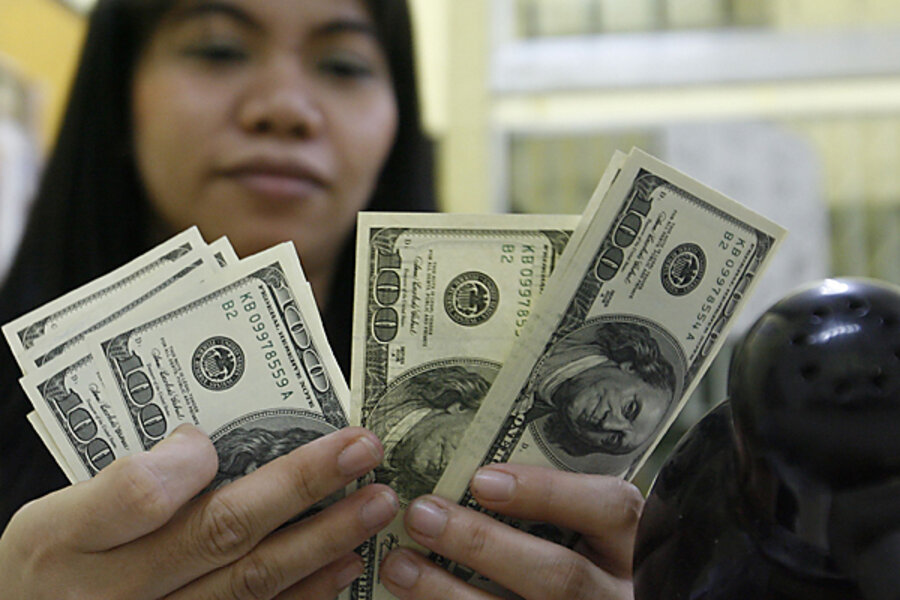Fiat money turns 40, the tragedy goes on
Loading...
Forty years ago today, on the morning of Sunday, August 15, 1971, the US president, Richard Nixon, declared the inconvertibility of the dollar into gold.[1] The 20,000 tons of the yellow metal deposited in Fort Knox in 1944 had decreased substantially due to the high military costs of the Vietnam War. The United States — the leading global economic power — could not honor its financial commitments.
As a result, the Bretton Woods system officially ended, and the dollar became a fully fiat currency, backed not by gold but by the promise of the government.
This meant the end of a historical and monetary rule that, from the dawn of civilization, had made money a general medium of exchange and also a store of value. It began a new era of historical abnormality — that of fiat currency and central-bank monopoly, where the ability to provide credit and financing becomes as boundless as the production of legally enforced paper printed by the issuing bank.
With the burial of the last vestiges of the gold — that "barbarous relic" of the past, in Keynes's words — the annoying limitation on the creation of money and credit was broken. Human needs, as well as political demands mobilized through democratic majorities (and minorities), are infinite.
Why stop spending? Why sacrifice immediate pleasures? The new fiat currency, devoid of intrinsic properties, releases governments from their commitment to convertibility, granting unlimited powers to the rulers of this statist system. With the burial of sound money, Keynes stands as the prophet of a new era of enjoyment and excitement under the new gospel of spending. Fiat money helps to remove the link between production and consumption, contributing to the delusion that the ineradicable scarcity of capital has been abolished.
The central banks can now print any amount of money. The dollar, which functions (so far) as the international currency, acquires real goods without offering anything in return. Of course, some holders of dollars are hard workers who, integrated within the structure of production, contribute to society with the provision of real goods and services. But there are also the politicians and bureaucrats — a completely different class of people.
This parasitic class weakens the productive class (and also manipulates production through public spending). At the moment, the European Central Bank is monetizing the debt of the peripheral European countries, diverting real resources from entrepreneurs in order to finance the wasteful activities of governments. It's totally outrageous, morally unjust, and economically ruinous. It's just one more road to serfdom.
Fiat money attempts the miracle of turning stones into bread or, rather, of exchanging paper for cars, electrical appliances, and luxury clothing. It's the wonderful feeling of spending and consuming without the necessity of producing. Through fiat money, the richest and most powerful countries have also become the most indebted.
Unlike the 19th century, when the dominant power (Britain) accumulated surpluses, and the emerging nations ran into debt, now just the opposite happens. The United States' external deficit and his twin brother, the public deficit, absorb the bulk of world savings, while emerging countries, most remarkably China, lend to them. And it seems that China — the largest single holder of US government debt, with more than 25 percent of all foreign-held US Treasury securities — is not resigned to stay passive while the value of its holdings is decreasing.
The United States — even when it was born in 1776 from a libertarian revolution against the arbitrary despotism of a British state that wanted to impose taxes without consultation — has in its DNA the genes of public spending and unlimited government growth. Today's United States of America has nothing to do with those of Thomas Jefferson. The founding principles were forgotten a century ago with the creation of the Federal Reserve in 1913, the explosion of government spending, and the consequent increase in taxes and debt.
Conclusion
We can continue the journey started on August 15, 1971, or acknowledge that it was a tragic error of dire consequences.
Defenders of unlimited Leviathan advocate additional doses of quantitative easing and the creation of a single currency controlled by a world central bank.[2] Along this line, major central banks could take unified and oligopolistic action under the pretext of coordinating monetary policies. This would mean total disaster and the ultimate triumph of the system that has led to the current crisis.
The alternative is a return to sound money, a restoration of the true currency, spontaneous creation of the social order, and a rejection of the meddling of governments and central banks.
Add/view comments on this post.
--------------------------
The Christian Science Monitor has assembled a diverse group of the best economy-related bloggers out there. Our guest bloggers are not employed or directed by the Monitor and the views expressed are the bloggers' own, as is responsibility for the content of their blogs. To contact us about a blogger, click here. To add or view a comment on a guest blog, please go to the blogger's own site by clicking on the link above.





